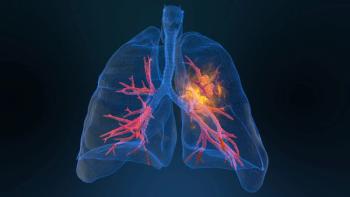
Oncology NEWS International
- Oncology NEWS International Vol 11 No 10
- Volume 11
- Issue 10
Protective Effects of Circumcision Explored
ORLANDO-Uncircumcised men are at increased risk of HIV infection. A new study presented at the 100th Annual Meeting of the American Urological Association (abstract 111) suggests that this is due to high numbers of HIV target cells in the foreskin. Carlos R. Estrada, MD, of Rush-Presbyterian-St. Luke’s Medical Center, Chicago, and his colleagues evaluated 8 pediatric and 6 adult foreskins with and without a history of HIV-1 infection. Cervical biopsy tissue served as a control.
ORLANDOUncircumcised men are at increased risk of HIV infection. A new study presented at the 100th Annual Meeting of the American Urological Association (abstract 111) suggests that this is due to high numbers of HIV target cells in the foreskin. Carlos R. Estrada, MD, of Rush-Presbyterian-St. Luke’s Medical Center, Chicago, and his colleagues evaluated 8 pediatric and 6 adult foreskins with and without a history of HIV-1 infection. Cervical biopsy tissue served as a control.
Using immunohistochemistry and image analysis, the researchers quantified three cells targeted by HIV: T cells (CD4+), macrophages (CD68+), and Langerhan’s cells (CD1a+), as well as the HIV coreceptors CCR5 and CXCR4. The foreskins had high numbers of the three target cell types, compared with the cervical tissue, with higher proportions in the adult foreskins. Cells expressing CCR5 predominated, compared with CXCR4 expression.
The tissue specimens were then exposed to HIV-1. Analysis showed that CD4+ T cells and Langerhan’s cells in the inner mucosal surface of the foreskins were seven times more susceptible to HIV infection than cells in the cervical tissue.
"Increased risk of HIV-1 infection in uncircumcised men is likely caused by the presence in the foreskin of large numbers of HIV-1 target cells, especially T cells and Langerhan’s cells, expressing primarily CCR5," Dr. Estrada said. "Since uncircumcised men are likely at greater biological risk of heterosexual HIV-1 acquisition, male circumcision should be considered as an additional HIV protection strategy."
Articles in this issue
about 23 years ago
FDG-PET Predicts Prognosis in Primary Osteosarcomaabout 23 years ago
Vaccine Turns Immune System Against Cancer Cellsabout 23 years ago
Three Themes to Guide von Eschenbach at NCIabout 23 years ago
Arimidex Approved for Early-Stage Breast Cancer in Postmenopausal Ptsabout 23 years ago
Long-Term Exposure to Diesel Exhaust Poses Lung Cancer Riskabout 23 years ago
Most Americans Unaware of Excessive Weight as a Risk for Some Cancersabout 23 years ago
Three Themes to Guide von Eschenbach as NCI Directorabout 23 years ago
Gleevec Gets FDA Priority Review for First-Line Use in Early CMLabout 23 years ago
New Anti-HIV Agent Prevents Virus From Entering Cellabout 23 years ago
Docetaxel/Gemcitabine Effective in Advanced NSCLCNewsletter
Stay up to date on recent advances in the multidisciplinary approach to cancer.

















































































